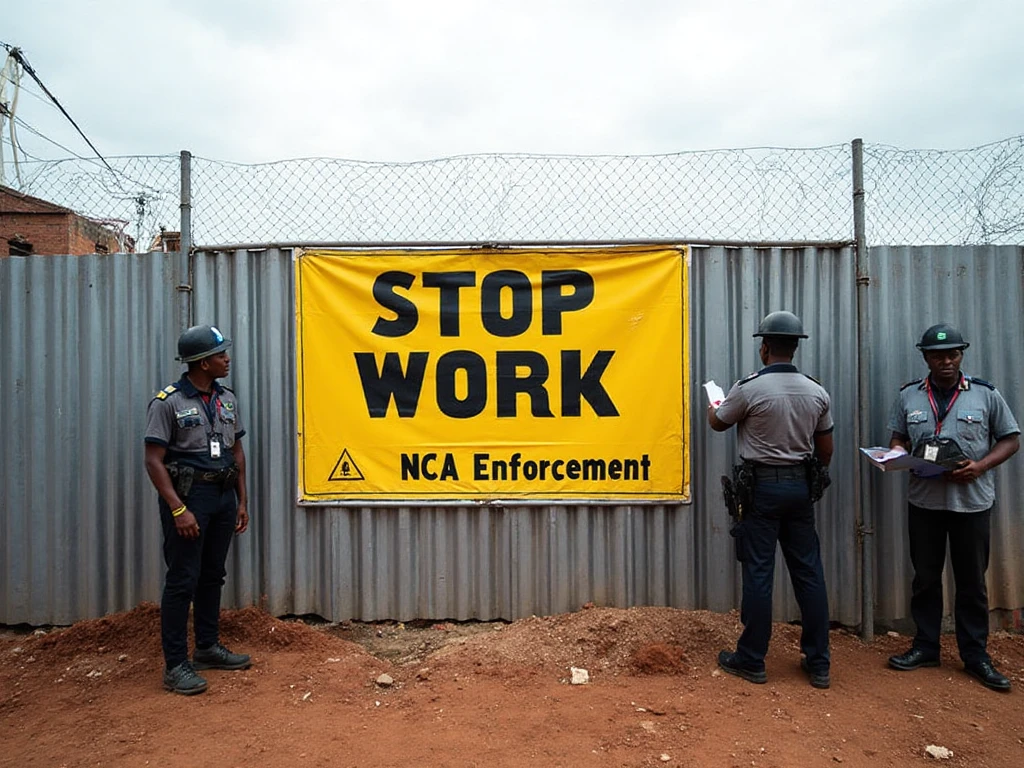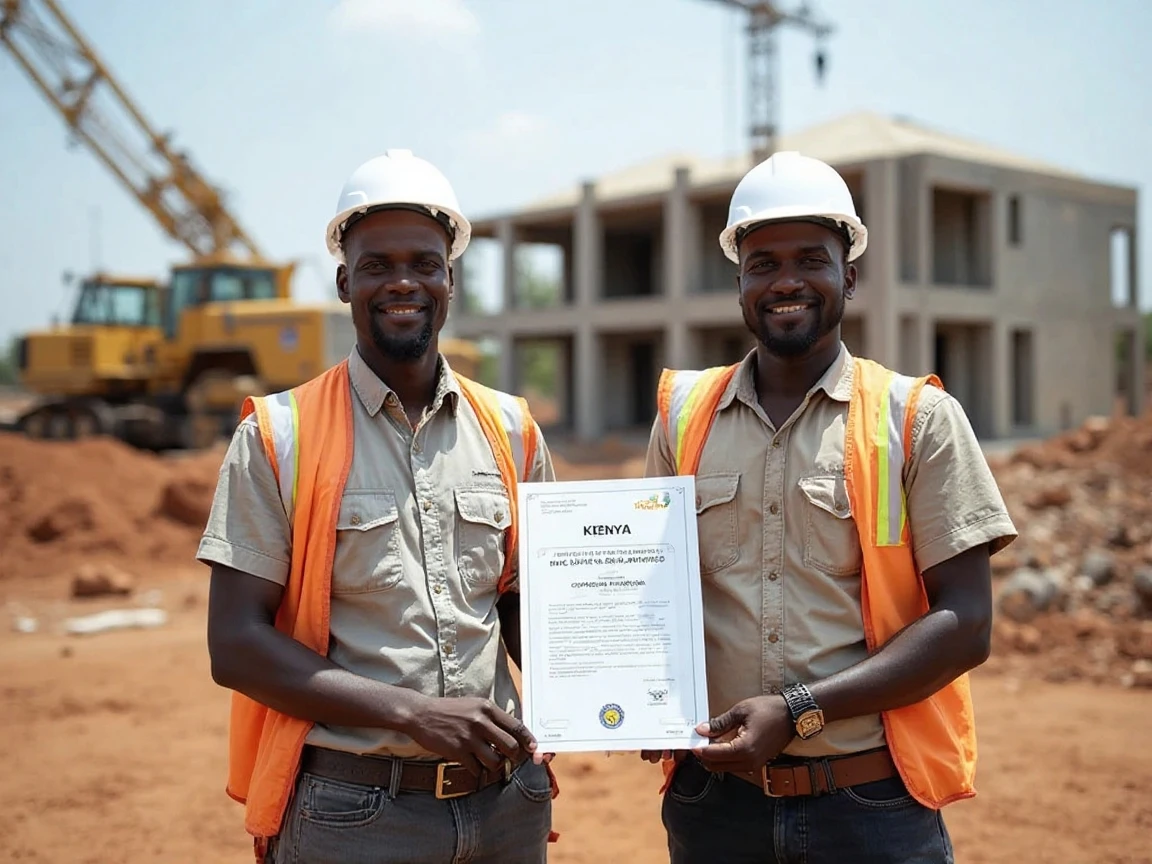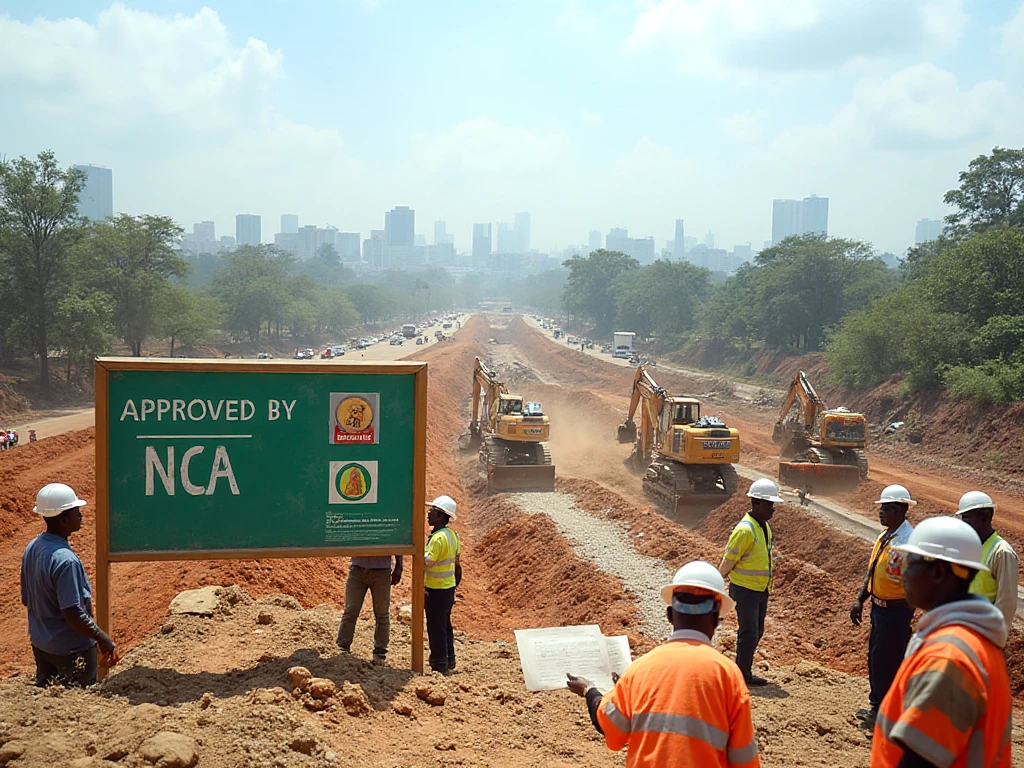NCA Project Registration in Kenya: A Comprehensive Guide
National Construction Authority (NCA) project registration is a mandatory process for all construction projects in Kenya. This guide outlines the requirements, costs, and step-by-step process for successful NCA project registration.
Turn Paperwork into Progress: Easy NCA Registration Guide
Construction in Kenya is highly regulated to ensure safety, quality, and compliance with national standards. One of the critical requirements is NCA project registration, which every contractor, developer, or project owner must undertake before starting construction.
Whether you’re building a residential home, commercial property, or infrastructure project, the NCA project registration process ensures accountability, safety, and legal compliance. This article provides a step-by-step guide for NCA project registration in Kenya, explaining the required documents, fees, timelines, and the implications of failing to comply.

Why NCA Project Registration Matters: A Deeper Look
- Safety assurance (beyond the paperwork)
- The NCA’s project registration process primarily protects people who use buildings, roads, and other infrastructure. Registered projects must submit engineered drawings and Bills of Quantities demonstrating structural safety, drainage, and fire egress.
- When you complete the proper NCA project registration, the National Construction Authority (NCA) can check that the proposed structural systems, foundations, and materials are appropriate for the soil, loads, and intended use—reducing the chances of collapse, progressive failures, or life-threatening defects.
Best practice: ensure your structural engineer, architect, and mechanical, electrical, and plumbing consultant stamp, sign, and supply complete design calculations with the submission. NCA inspectors expect to review this.
- Professional oversight (who is on the project)
- Registration allows the NCA to verify the people behind a project. The NCA portal asks for the names, qualifications, and professional registration numbers of the project manager, resident engineers, and technical staff. That means only licensed, accountable staff should be running the job.
- This oversight improves workmanship and gives clients recourse if a non-registered person attempts to sign off on engineering works.
Tip: Include CVs and copies of IEK/EBK/other registrations for key staff to speed verification.
- Legal compliance (avoid fines, stoppages, and litigation)
- Construction without registration exposes owners and contractors to fines, work stoppage orders, and legal action. Insurers and courts view unlicensed practice negatively if an accident or a claim occurs and the project is unregistered.
- Proper NCA project registration provides documented proof of compliance, which is useful for bidding, financing, and dealing with county approvals.
Practical point: Keep the NCA compliance certificate (PDF) on site and in tender folders — many public tenders require it upon submission.
- Project monitoring (inspections, transparency, and quality)
- Once a project is registered, NCA can schedule site inspections at critical stages: foundation, superstructure, first correction, and completion. The purpose of these checks is not micro-managing, but rather validating safety, materials, and supervision.
- Registration also speeds up monitoring and dispute resolution: NCA can pull the registered project record, see the consultants and contractor, and follow up if problems arise.
Operational tip: Prepare an inspection pack (as-built drawings, site diary, materials test certificates) before NCA visits.
Step-By-Step Guide for NCA Project Registration: Granular Process

Below is a practical, clickable workflow you can use right now.
- Create or access your NCA portal account.
- Use the official NCA project registration page and register your company account using a valid email and contact phone. Use that login if your company already possesses an account from contractor registration.
- Recommended: Set a central project admin (email + phone) who manages all uploads and portal queries.
- Start a new project record.
- Click “Register New Project,” and fill in the basic information: project name, location (GPS if available), plot/parcel number, client name, contractor name, estimated contract sum, and expected start & completion dates.
- Choose the relevant works category (Building/Specialist/Roads & Civil) and the expected class level you wish to operate under.
- Prepare and upload the required documentation (file format and name).
- File formats: PDF is preferred for drawings and certificates, JPEG/PNG for photos, and Excel for BQ if the portal accepts it. Scan documents at 300 dpi for clarity.
- Document types and specifics (common portal requirements):
- Approved architectural and structural drawings (stamped & signed by registered professionals).
- Bill of Quantities (detailed, standard form and cost breakdown).
- The contractor’s NCA compliance certificate is available in PDF format.
- A copy of the county or municipal building permit or planning approval.
- Site ownership proof: a title deed, a lease agreement, or allotment letter.
- KRA tax compliance certificate (current).
- CR12 (for companies) issued within the last 3–6 months.
- Key staff CVs and professional registration numbers (IEK/EBK).
- Plant & equipment evidence: logbooks, hire, or lease agreements.
- File naming convention: ProjectName_DocumentType_Date (e.g., RiverviewApartments_BQ_2025-06-01.pdf) — this reduces confusion during review.
- Professional stamps and notarisation.
- All drawings and technical reports must carry the authoring architect’s or engineer’s stamp and signature. Certain counties may request original signed copies, so please refer to the portal’s guidance for more information.
- If a document is an authenticated copy (e.g., foreign qualifications), include certified translations and notarised copies.
- Payment of registration fees.
- Once documents are uploaded, the portal generates a payment invoice. Payment channels typically include online bank transfer, mobile money (M-Pesa), and local bank payments. Follow the portal’s payment instructions and keep transaction receipts.
Note: fees are usually pegged to the contract sum; larger projects pay higher registration fees.
- Submit & monitor.
- Apply and monitor the portal dashboard. Please retain the project reference number provided in the NCA’s acknowledgement. Please be prepared for system messages and queries, and respond promptly.
- NCA verification & queries.
- NCA reviewers verify the completeness of technical documents, check staff registrations, and confirm tax/permit validity. They may request clarifications or additional documents—respond within the portal and upload revised documents.
- Site verification (if selected).
- For higher-value/high-risk projects, NCA may schedule an on-site verification. The inspector checks staff presence, plant, and Health, Safety, and Environment (HSE) arrangements and ensures that the site corresponds to the submitted drawings. Prepare a site inspection pack in advance.
- Approval & issuance of the project registration certificate.
- Once approved, download and display the NCA project registration confirmation and the NCA project compliance certificate, where required. Keep digital and printed copies for audits and tenders.
Documents Required: Detailed Checklist and Pro Tips

Ensure that you have the following documents ready before you kickstart the NCA project registration process:
- Design & technical
- Architectural drawings (floor plans, elevations, sections) — PDF, A3/A2 scale.
- Structural drawings & calculations — signed by the structural engineer.
- Mechanical & electrical drawings (for specialist works).
- Bill of Quantities.
- Legal & corporate
- Title deed or lease; council allotment letters.
- County building permit or planning approval (if already issued).
- CR12 for companies and IDs for proprietors.
- Tax compliance certificate (KRA).
- Human resources & competence
- CVs of the resident engineer, project manager, and supervising technicians.
- Copies of professional registrations (IEK/EBK) and practising certificates.
- Plant & HSE
- Equipment schedule and ownership/lease documents.
- Health & Safety plan, risk assessment, emergency procedures.
- Evidence of worker insurance and WIBA coverage.
Pro tips:
- Submit high-quality, searchable PDFs for documents.
- Assemble a single zipped folder locally with all documents before uploading — it speeds the process.
- Ensure that the expiration dates for TCC, CR12, and professional licences are current.
How Long Does NCA Project Registration Take: Timelines & Factors
Various factors must be considered during the NCA project registration timeframe in Kenya. Below, we have highlighted some of them and given an average registration process timeframe.
- Typical timeline: 7–14 working days for straightforward residential projects with complete documentation.
- Complex or high-value projects: It may take 3–6 weeks due to technical review, inter-agency checks (NEMA, county), or required site verification.
- Common delay causes include missing or unsigned drawings, expired tax certificates, mismatched contractor details, or a lack of evidence of key staff.
- Speed tips: respond to portal queries within 48 hours and upload corrected documents with a cover note explaining changes.
NCA Project Registration Fees: How They’re Calculated and Planning
As a usual government requirement, “pay what belongs to Caesar.” You need to pay NCA various fees during the project registration process, but they vary depending on the project’s size, scope, and nature. Check out below:
- Fee model: Fees are usually calculated as a function of the declared contract sum and the works category. Higher contract values and specialist works attract larger fees.
- Budgeting: Factor the registration fee into pre-construction costs (alongside county permits and preliminary tests). Furthermore, budget for document preparation costs (QA tests, professional fees).
- Verify: Fee tables change periodically — always check the NCA portal for the current fee schedule before submission.
Penalties for Unregistered Projects: What Can Happen

Failure to comply with a government statutory requirement in Kenya can have significant legal consequences. To avoid these situations, you must be well-informed about the penalties and implications of being found in violation. Here is what can happen:
- Immediate enforcement: NCA or county authorities can order a stop-work notice until the project is registered.
- Financial penalties: Fines and potential legal action for operating without registration.
- Insurance & contract risk: Insurers may refuse claims, and clients may terminate contracts if contractors lack valid project registration.
- Reputation & procurement: Being listed as non-compliant can bar you from future public/private tenders.
If NCA inspectors or anyone else find you working without a license, stop taking on new projects, begin the registration process immediately, and maintain open lines of communication with the client. Ensure that you document all remedial steps.
NCA Project Registration vs Contractor Registration: Clarifying the Difference
Both licenses are required; hence, a contractor must be registered (have an active compliance certificate) to submit a project; conversely, a registered contractor must still register each project individually. A client must also ensure that all licenses are obtained and up to date and that standards are met.
- Contractor registration: Registering as a contractor with NCA establishes a company’s capability (class, categories); it’s about the entity.
- NCA project registration: This is project-specific; it links a particular contractor and team to a defined scope, location, and value.
Checking Status and Post-Registration Obligations
You have now complied with all NCA project registration requirements. However, you must follow up on the process, so keep checking on the project approval status to meet your post-registration obligations.
- How to check: use the NCA portal and the project reference number, or search the NCA public register. NCA also sends portal messages and emails.
- Keep records updated: If the contractor changes or the project budget or duration changes significantly (e.g., >10–20%), update the portal.
- Site requirements during construction: Displaying the compliance certificate, maintaining the site HSE plan, and keeping the project’s critical documents on site for inspector review.
- Completion and close-out: Once the work is complete, submit the completion certificates, as-built drawings, and test results so that NCA can officially mark the project as closed and issue closure confirmations.
Common NCA Rejections and How to Avoid Them
Sometimes, NCA may not approve your project; however, they generally ensure that you maintain a high success rate to promote growth in the construction sector in Kenya. Therefore, review the factors that the NCA’s approval board may consider when rejecting your application.
- Missing professional stamps or signatures: ensure originals or stamped scanned copies are uploaded.
- Expired KRA TCC or CR12: renew these early and upload current certificates.
- Inadequate BQ or vague contract sum: submit a detailed, line-item BoQ.
- Staff not registered with IEK/EBK: verify and attach professional registration numbers.
- Poor file quality: Use clear, legible scans and compress PDFs to the portal limits.
When a submission is rejected, the portal lists the reasons. Correct quickly, upload a short cover letter explaining the fixes, and resubmit.
Pre-Submission Checklist (Quick)
Here’s a glance at the pre-submission checklist, which you can quickly note in your notebook for faster access during the NCA project registration process.
- Create a portal account and confirm the company contact details.
- Prepare stamped & signed drawings (architect & structural).
- Finalise detailed BQ.
- Upload the current KRA TCC and CR12.
- Attach key staff CVs and professional numbers.
- Prepare plant logbooks and HSE plan.
- Pay fees and save transaction receipts.
- Keep a project reference number after submission.
Ensuring NCA Project Compliance in Kenya
Achieving NCA project compliance in Kenya requires close collaboration between project owners, contractors, and consultants. Submitting accurate documents, meeting deadlines, and following the NCA project registration process step by step (pictorial) reduces the risks of delays or penalties.

Final Thoughts: NCA Project Registration
NCA project registration is one of the most crucial steps in starting any construction project in Kenya. By following the step-by-step guide for NCA project registration, ensuring you have the required documents, and paying the correct project fees, you safeguard your project against costly penalties and delays.
Compliance with the NCA project registration requirements protects your investment and enhances the quality and safety of Kenya’s built environment.
Ready to Grow Your Construction Business? Begin with Our News, Insights, and Reviews
Need a step-by-step checklist for your construction company registration? A Guide to NCA Contractor Registration. Visit ConstructionFrontier.com for expert procedures on how-to guides that make your construction insights and guidelines straightforward.





